Balustrade Production For £175M London Garden Bridge Project

The Garden Bridge is a £175 million pound project to build a 366m-long ‘floating garden’ over the River Thames, planned to begin in January 2016. Set to become a world-class landmark, showcasing the UK’s expertise in design, engineering and landscaping, Brooks Forgings are proud to announce their involvement in the project.
The Project - Overview
The Garden Bridge will stretch from the top of Temple underground station on the Northbank to the South Bank. The bridge will hold an expansive garden. Footpaths will weave through the garden, creating a new pedestrian route which will be free and open to all between the hours of 6am–midnight.
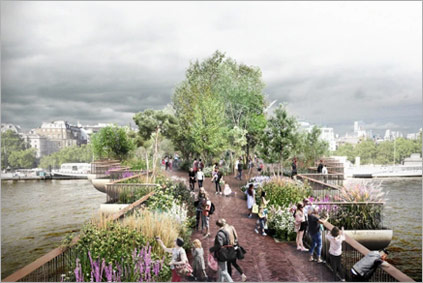 The garden will be an enchanted space in the middle of the busy city. It will feature an abundance of plants, trees, and shrubs indigenous to the UK, Northern Europe and other parts of the world. These have all been chosen for their biodiversity, bringing wildlife and horticulture to the heart of London. The planting has been carefully designed to ensure that it will frame and enhance views of the iconic landmarks of London.
The garden will be an enchanted space in the middle of the busy city. It will feature an abundance of plants, trees, and shrubs indigenous to the UK, Northern Europe and other parts of the world. These have all been chosen for their biodiversity, bringing wildlife and horticulture to the heart of London. The planting has been carefully designed to ensure that it will frame and enhance views of the iconic landmarks of London.
The garden consists of several sequential spaces, designed to reflect a number of different characteristics of the rich cultural heritage of the capital’s river and both river banks so that a pedestrian crossing the bridge will walk through an ever-changing seasonal landscape.
The south end will have a more relaxed aesthetic, featuring plants reflecting South Bank’s marshland history such as willow, birch, alder, geranium, violet, and primrose.
At the north end, planting will be inspired by Temple Gardens’ history of ornamental gardening, featuring wisteria, magnolia, roses, alliums, irises and summer snowflakes.
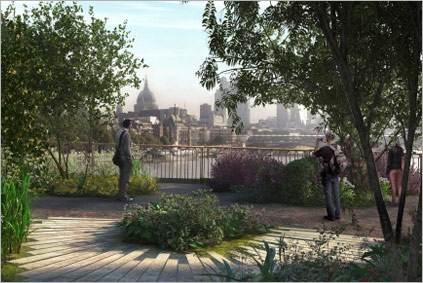 Holding the garden will be a beautifully engineered copper-nickel structure. Its warm colour will provide a contrasting finish to the stone and steel structures that characterise the architecture on both sides of the river.
Holding the garden will be a beautifully engineered copper-nickel structure. Its warm colour will provide a contrasting finish to the stone and steel structures that characterise the architecture on both sides of the river.
The bridge has been designed to offer pedestrians a series of unique spaces throughout the garden, providing a sense of intimacy on your journey across the River Thames. There are opportunities to stop and look, to explore and meander through the gardens, or walk directly across as part of a wider journey.
The Garden Bridge will be created for the enjoyment of people for generations to come. This new landmark will showcase the best of British design and will be used by all, becoming a cherished part of London’s landscape.

The Balustrade - Design & Manufacture
Designers for the project have generated an ambitious design for the balustrade that will span a total of approximately 1000 meters in various locations throughout the project.
The balustrade consists of 2 separate designs produced using the same material, requiring tooling for 2 different head formations and 2 different base formations.
Brooks Forgings in-house production and design team analysed the design and spent several weeks designing tooling to ensure the best quality component could be produced using the most effective manufacturing process.
It was crucial that the profile of the material blended cleanly into the head and fluted base of the balustrade components with no mismatch or unclean edges.
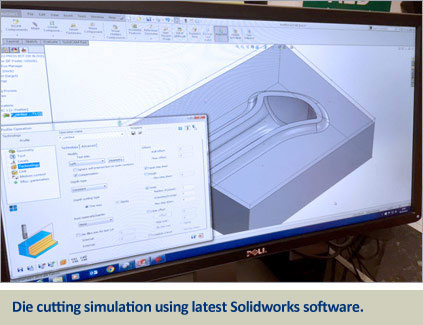 The Tooling For The Project Was Very Complex And Required On a Short Lead Time.
The Tooling For The Project Was Very Complex And Required On a Short Lead Time.
A total of 4 die sets were produced using the latest Solidworks CAD and CAM software. This allows the production of 3D models, product & tooling drawings and simulates both tooling and die cutting processes.
The 13 CNC machines at Brooks Forgings are WIFI enabled, allowing remote programming and problem-solving from the central control room by one of
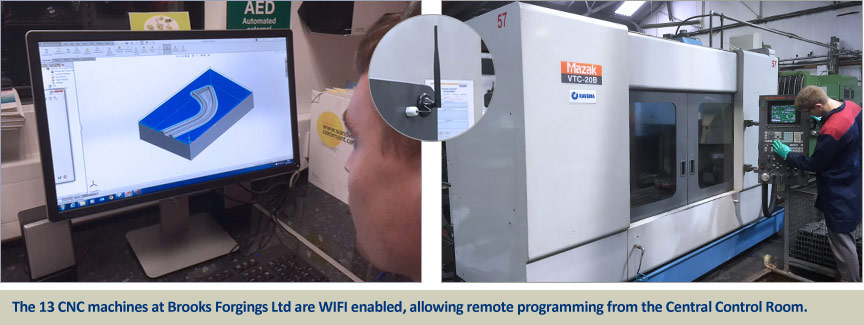
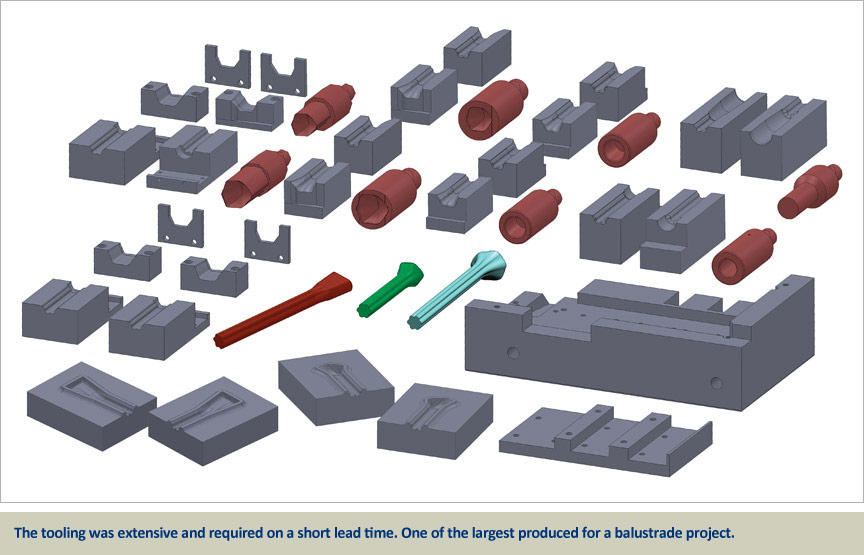
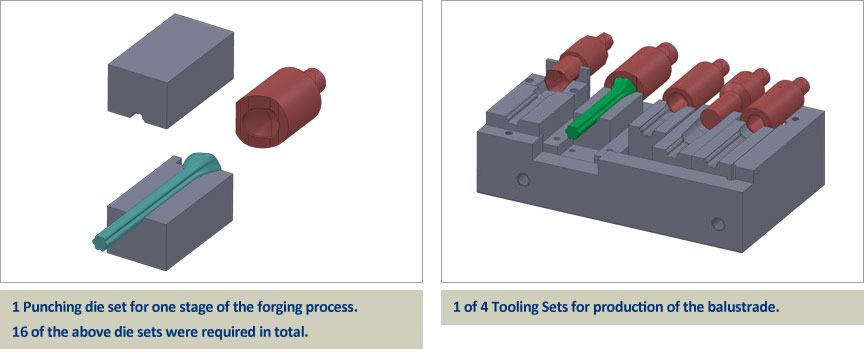
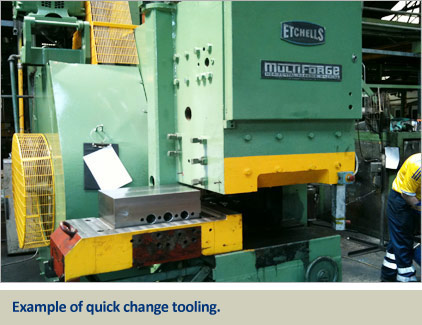
The Horizontal Upset Forging process was selected for the project and the tooling was designed to be used on one of 3 Etchells Multiforge machines.
The
One of its main features is the departure from conventional vertical opposed gripping dies and the innovation of the horizontal disposition.
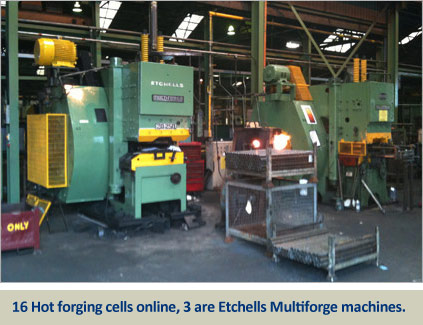 Not only is the weight eliminated but, in addition, the operator is working at a constant height. Without the need to raise and lower the component between die impressions, as the case on conventional vertical grip die machines.
Not only is the weight eliminated but, in addition, the operator is working at a constant height. Without the need to raise and lower the component between die impressions, as the case on conventional vertical grip die machines.
The generous die width enables five forging stations to be set up in one tool assembly which can often eliminate secondary processing of certain components which require multiple operations.
This method of production is economical, allows quick change of tooling and offers strength, high speed, and accuracy.
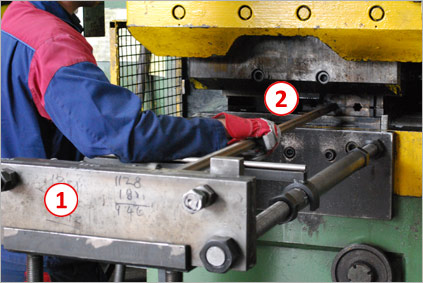
Back Gauges Prevent Excessive Marking On The Components
Upset forging horizontally enables the use of back gauges for each forging operation.
Back Gauges (1) prevent excessive marking on the components by reducing the pressure used on the Gripping Dies (2) and provide high accuracy through each forging stage and on the finished length of the component.
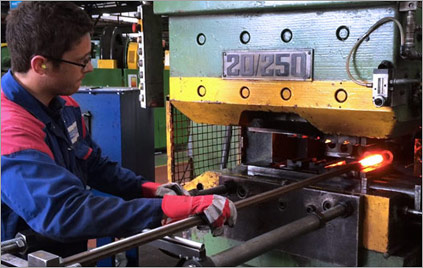
The Upset Forging Process Creates a Hot Forged Profile That Will Provide Maximum Stability As a Support Structure.
It also provides maximum strength and ductility due to its manipulation of the grain flow characteristics unlike other manufacturing processes such as casting and fabrication.
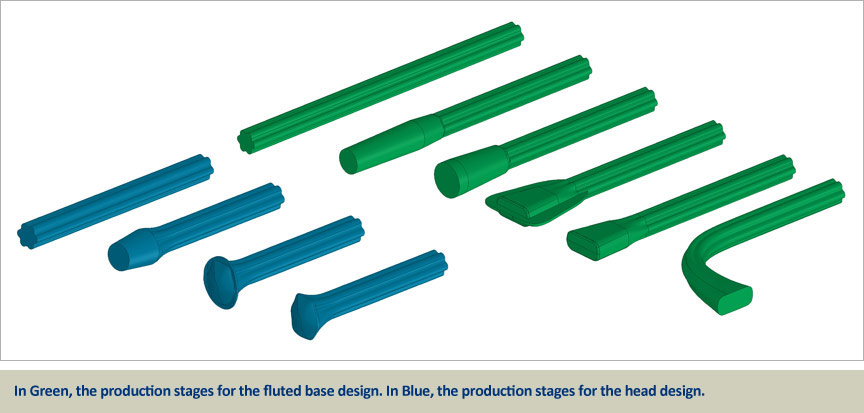
The head designs are formed using 2 gathering processes (see below) and a final forming blow providing the distinctive shape. This is followed by a clipping process to remove any excess material. The fluted base is formed using 2 gathering processes and a final form using a die press tool. The stages of the forging process can be seen above.
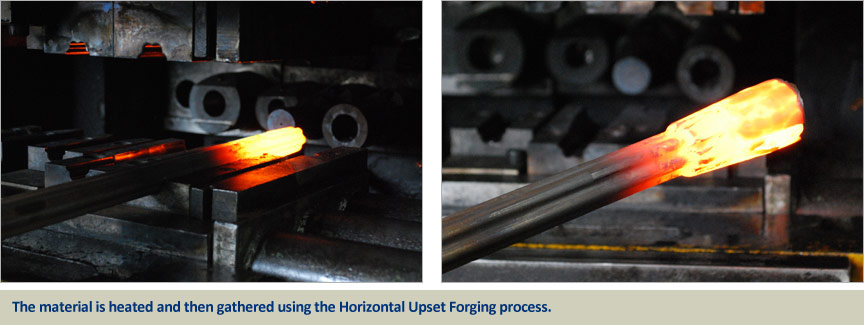
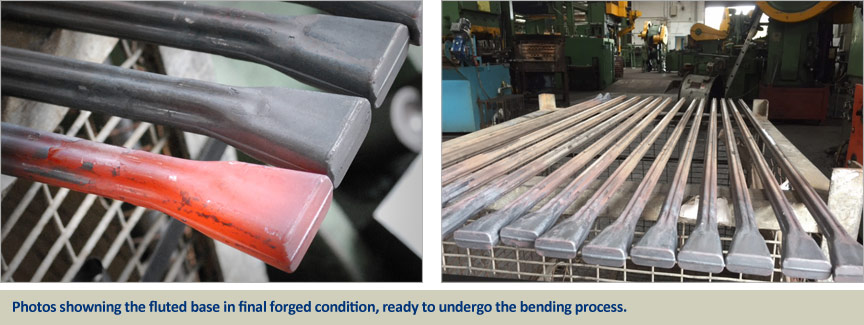
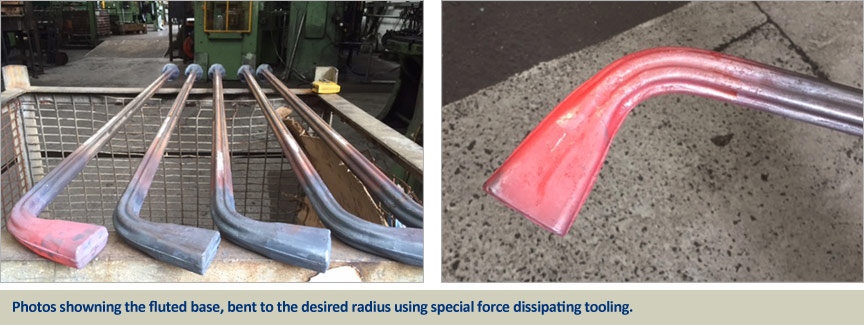
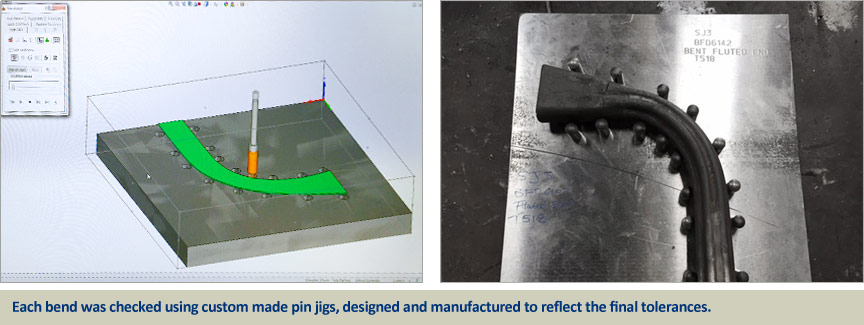
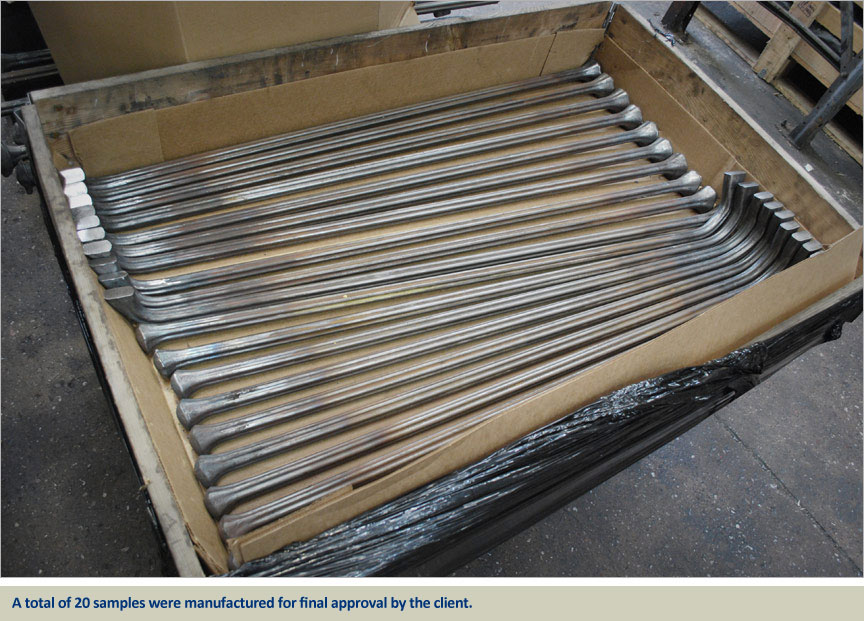

Artists impressions of the Garden Bridge Project are property of Arup © 2015


